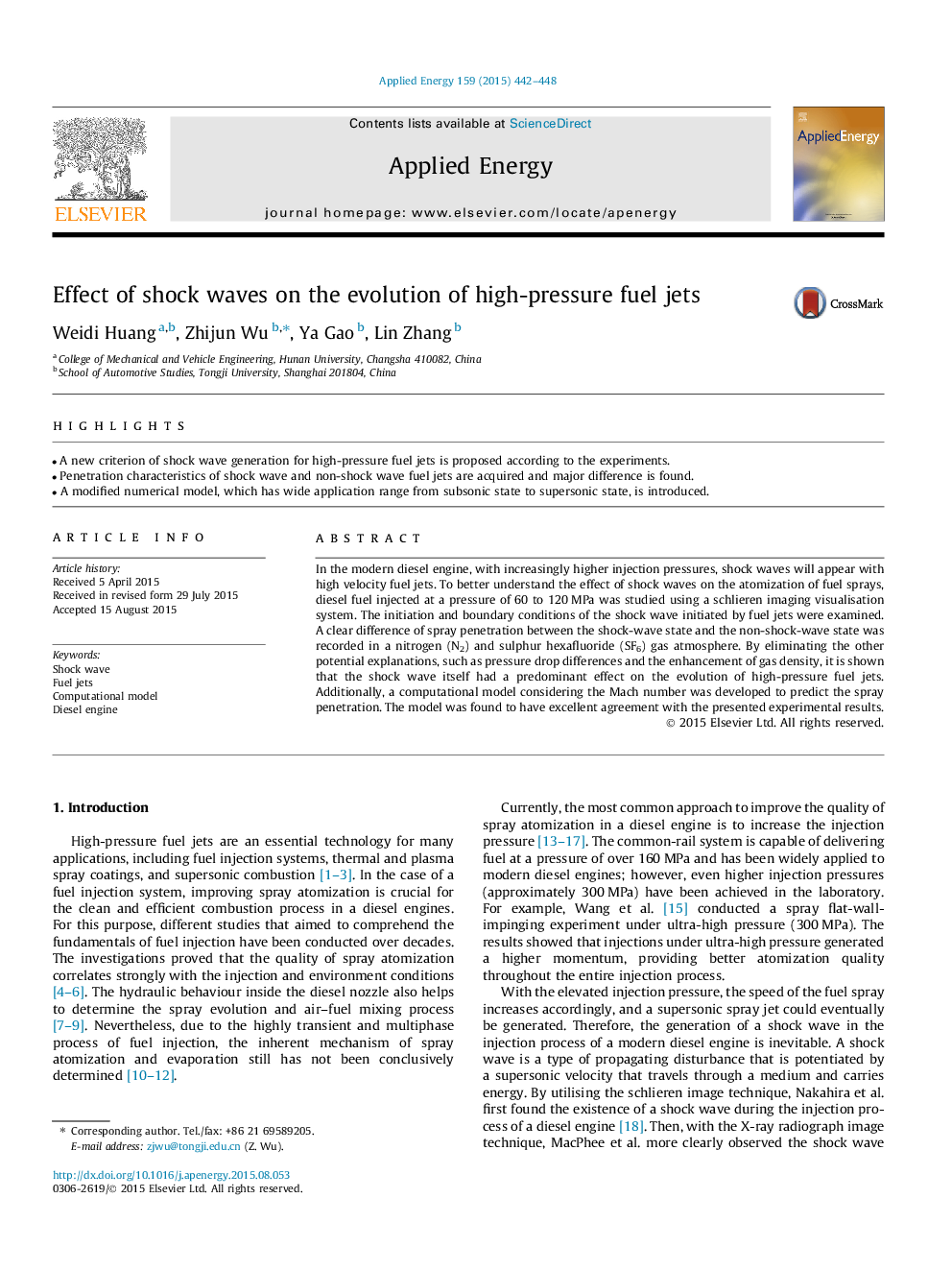| Article ID | Journal | Published Year | Pages | File Type |
|---|---|---|---|---|
| 6685614 | Applied Energy | 2015 | 7 Pages |
Abstract
In the modern diesel engine, with increasingly higher injection pressures, shock waves will appear with high velocity fuel jets. To better understand the effect of shock waves on the atomization of fuel sprays, diesel fuel injected at a pressure of 60 to 120Â MPa was studied using a schlieren imaging visualisation system. The initiation and boundary conditions of the shock wave initiated by fuel jets were examined. A clear difference of spray penetration between the shock-wave state and the non-shock-wave state was recorded in a nitrogen (N2) and sulphur hexafluoride (SF6) gas atmosphere. By eliminating the other potential explanations, such as pressure drop differences and the enhancement of gas density, it is shown that the shock wave itself had a predominant effect on the evolution of high-pressure fuel jets. Additionally, a computational model considering the Mach number was developed to predict the spray penetration. The model was found to have excellent agreement with the presented experimental results.
Related Topics
Physical Sciences and Engineering
Energy
Energy Engineering and Power Technology
Authors
Weidi Huang, Zhijun Wu, Ya Gao, Lin Zhang,
